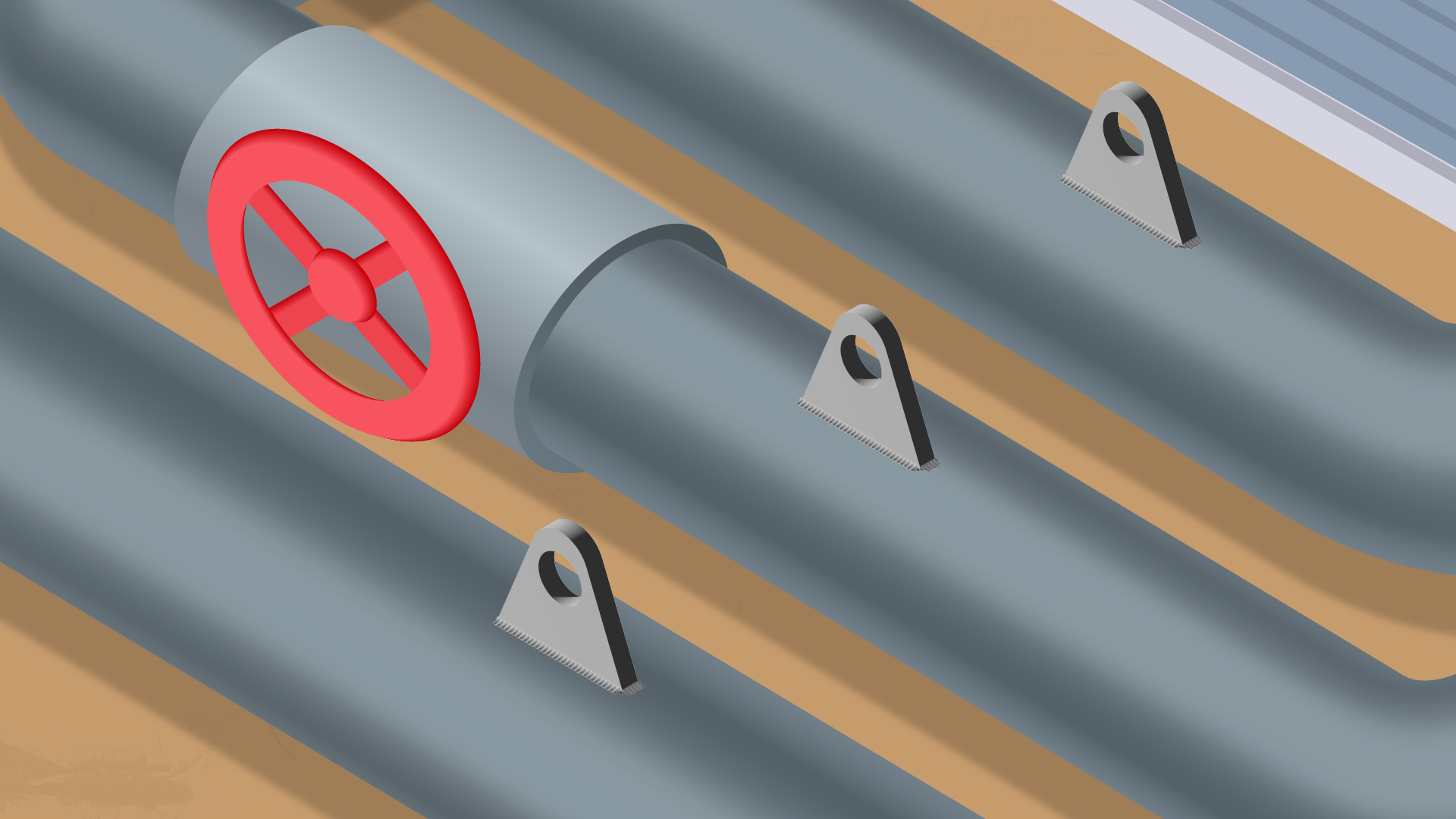Within the Ammonia Refrigeration industry, personnel occasionally encounter configurations that could be referred to as “interesting,” for the lack of a better term. Many contractors have regular practices that are certainly surprising. Sometimes, these practices are justified and sometimes, well… not so much.
Recently, I was asked the following question: Is it proper to attach clips, brackets, or other elements to the exterior of refrigeration piping? Naturally, one might wonder if such a thing is allowed under ASME B31.5 (the refrigeration piping code). At first, it almost seems counterintuitive to think that B31.5 would permit welding support elements to the exterior of a pipe. However, this practice is actually explicitly permitted as can be seen in the code excerpt below:
 From ASME B31.5, 2006 521.3.1 (f)
From ASME B31.5, 2006 521.3.1 (f)
Additionally, it’s worth pointing out that the 2016 version of ASME has the same exact language. The note that welding must meet the requirements of Chapter V is a nominal one. Again, there is nothing prohibitive in this language regarding the attachment of elements to piping.
Now, Section 531, which addresses heat treatment, is a little more interesting. Within this section, there appear to be two criteria for requiring preheating and postheating of welds. The first one refers to the welding procedure that is used. It states that if the procedure requires heat treatment, then heat treatment is, unsurprisingly, required. The other criterion is table 531.2.1, which indicates that, as a rule, ammonia refrigeration systems will fall under a category where no preheat and postheat treatment is needed. Thus, welding to the piping exterior wouldn’t be a concern under this provision.
So, to answer the initial question, this practice is deemed acceptable according to the “letter of the law.” However, this doesn’t necessarily mean that it should be done. The wise words of Mr. Jeff Goldblum in Jurassic Park come to mind:

From my point-of-view, welding to pipe for the connection of pipe supports is not an excellent practice. If it must be done, I would want to confirm through stress analysis that there is no risk of damaging the pipe due to expansion or other dynamic conditions. Furthermore, if a fabrication aid (like a lifting lug) has been used, insulation issues could occur if the aid is not removed. In such cases, the attachment should be removed and ground smooth before pressure testing to ensure that the piping was not compromised during the removal. And so, it is indeed acceptable to weld components to the exterior of refrigerant piping but remember to proceed with caution!
For more information on ColonialWebb’s Industrial Refrigeration services, click here.



